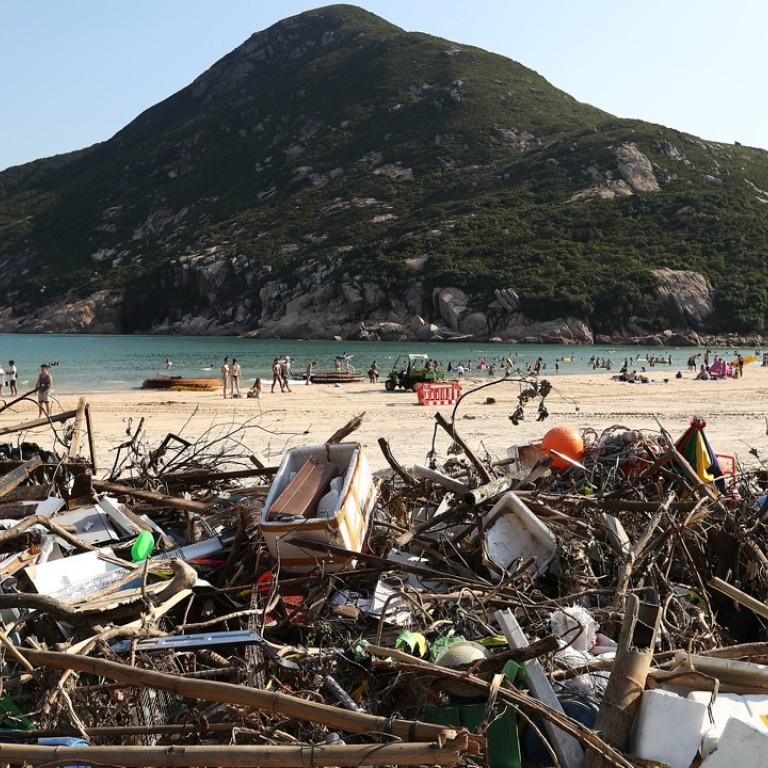
Three months after Typhoon Hato struck Hong Kong, city’s beaches are still strewn with wood and debris
Southern District Councillor Paul Zimmerman slams the negligence of Tree Management Office
When Typhoon Hato hit back in August, Hong Kong could consider itself fortunate there were no fatalities, unlike in neighbouring Macau where 10 people were killed.
Yet three months on, signs of the storm can still be seen in locations such as Shek O, where debris remains from some of the 1,057 trees that were brought down across the city.
In order to monitor about 1.7 million trees in the urban areas of the city, the government established a Tree Management Office seven years ago. Yet, Southern District Councillor Paul Zimmerman said the situation in Shek O shows a lack of commitment from the government to maintain the city.
“If it’s on the side of the beach or on the slopes, then it’s the Lands Department’s responsibility. The problem is that the department is overwhelmed and only responds to complaints about a specific location or [something considered] dangerous. Otherwise, the department just leaves it to nature [to clean up].”

But danger is exactly what Zimmerman was afraid of, pointing out a possible fire hazard.
“You don’t need a lot. Anything can catch fire, especially in this dry weather. There are already tonnes of dried-out wood that could burn very quickly.”
The district councillor was critical of what he called the bureau’s “habitual negligence”.
“As long as the build-up does not pose a threat to the public, then the situation will not be [dealt with]. All the slopes are unallocated government land and there’s no maintenance of them at all.”
Zimmerman said the case is the same with living trees which he wants the administration to better protect before typhoons hit.
But according to Jon Picker, that cannot be done. The director of Asia Tree Preservation company said that when it comes to typhoon-related incidents, it’s difficult to be completely prepared.
“It is different for every typhoon. In a storm that is so strong, like the signal No 10 [Hato] we had, it will take down even healthy trees, let alone those with structural problems.”

Last year, the Ombudsman published a report on the government’s tree management after the Leisure and Cultural Services Department failed to provide the watchdog with relevant inspection reports.
The comments highlighted the lax requirements for tree workers who had no professional knowledge in tree management. While their responsibility is to identify problematic trees and assess their risks of collapsing, basic training only lasts up to two days for these frontline workers.
Even though a tree’s health is inspected on a yearly basis, Picker warned that the accuracy of their assessments can vary considerably, because the tree surgeon’s inspections are subjective, with visual inspections for decays and infections.
“For example, if you found that a tree was in an area of potential high winds, we would suggest a crown reduction. Reducing the height can lower the amount of wind that would affect a tree. But others may recommend otherwise.”
The city’s notorious lack of land can also be a factor in the trail of destruction. Picker explains that some trees in urban areas grow in places with shallow soil cover, preventing them from forming deep-rooted foundations.
“With limited space and underground utilities and power lines, the soil is often compacted. Then it becomes a very complicated environment for it to grow in.”

